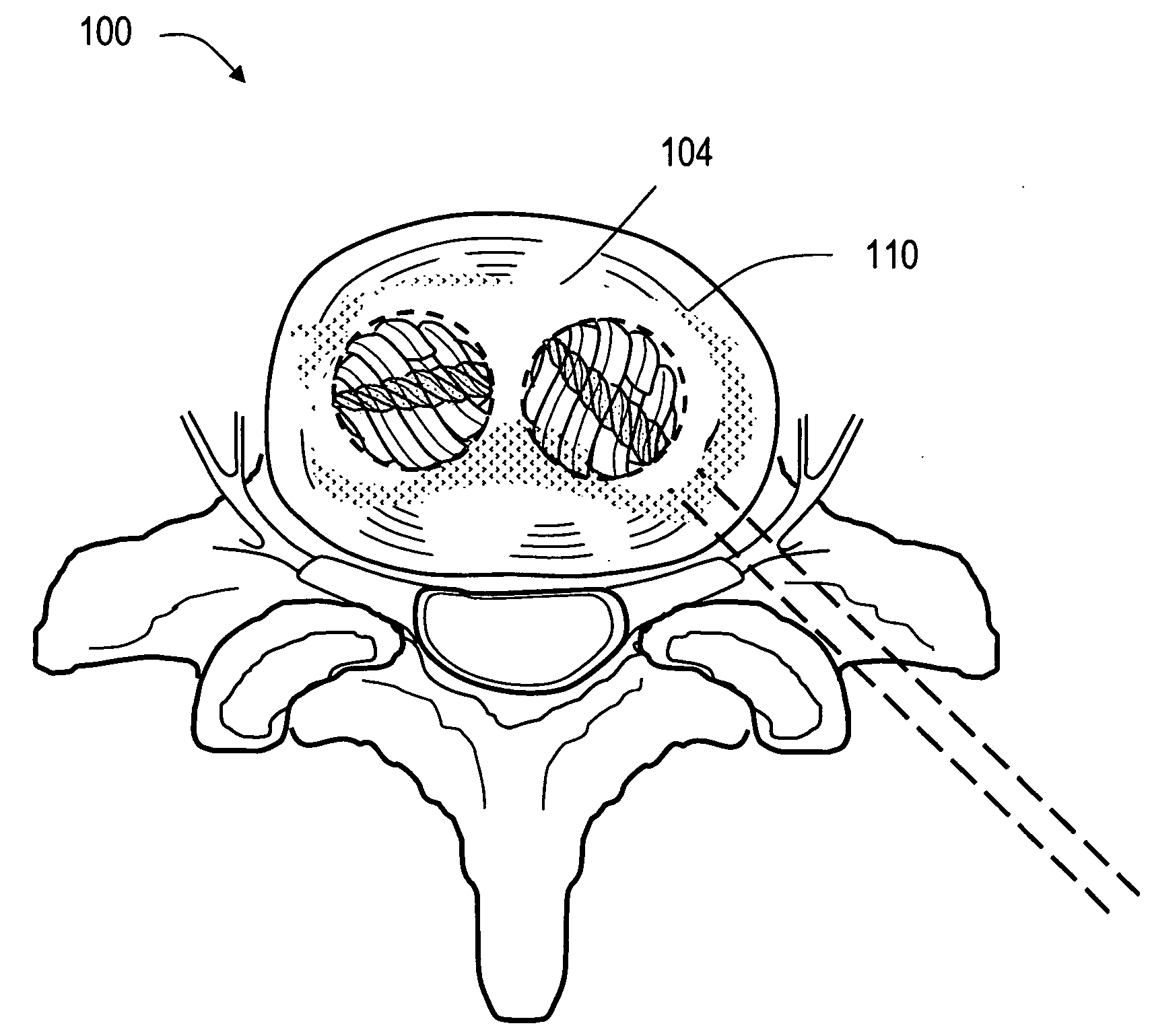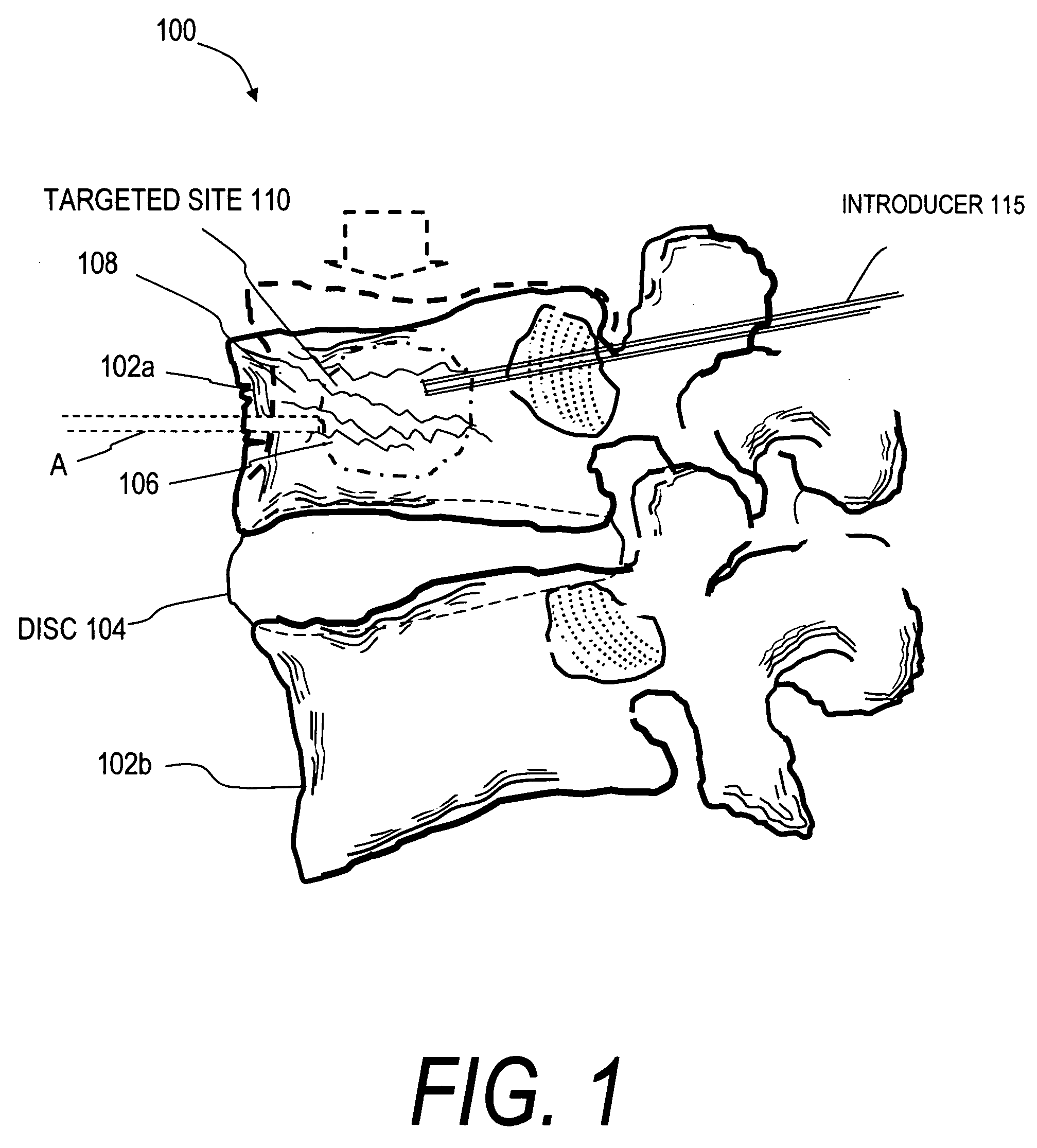Implants and methods for treating bone
a technology of implants and bone, applied in the field of medical implants, can solve the problems of fractures in the spine and hips, affecting mobility and quality of life, and the advances in medical advances aimed at slowing or arresting bone loss from aging have not provided solutions to this problem
- Summary
- Abstract
- Description
- Claims
- Application Information
AI Technical Summary
Benefits of technology
Problems solved by technology
Method used
Image
Examples
Embodiment Construction
[0030] The present invention comprises a bone implant of a reticulated material that can be radially expanded in cross-section to support a bone, and more particularly to move apart cortical endplates to at leat partly restore vertebral height. In one embodiment, the implants elements comprise reticulated scaffold structures that can allow for later bone ingrowth. FIG. 2A illustrates a greatly enlarged view of an exemplary open cell reticulated material 10 corresponding to the invention that is useful for defining terms used herein to describe the implants. In general, the term reticulated means having the appearance of, or functioning as wire network or substantially rigid net structure. The related term reticulate mean resembling or forming a network. The terms reticulated, reticulate and trabecular are used interchangeably herein to describe structures having ligaments 15 that bound an open cells 18 or closed cell in the interior structure.
[0031] Such reticulated structures 10 a...
PUM
| Property | Measurement | Unit |
|---|---|---|
| Height | aaaaa | aaaaa |
| Biodegradability | aaaaa | aaaaa |
| Fracture | aaaaa | aaaaa |
Abstract
Description
Claims
Application Information
 Login to View More
Login to View More - R&D
- Intellectual Property
- Life Sciences
- Materials
- Tech Scout
- Unparalleled Data Quality
- Higher Quality Content
- 60% Fewer Hallucinations
Browse by: Latest US Patents, China's latest patents, Technical Efficacy Thesaurus, Application Domain, Technology Topic, Popular Technical Reports.
© 2025 PatSnap. All rights reserved.Legal|Privacy policy|Modern Slavery Act Transparency Statement|Sitemap|About US| Contact US: help@patsnap.com



